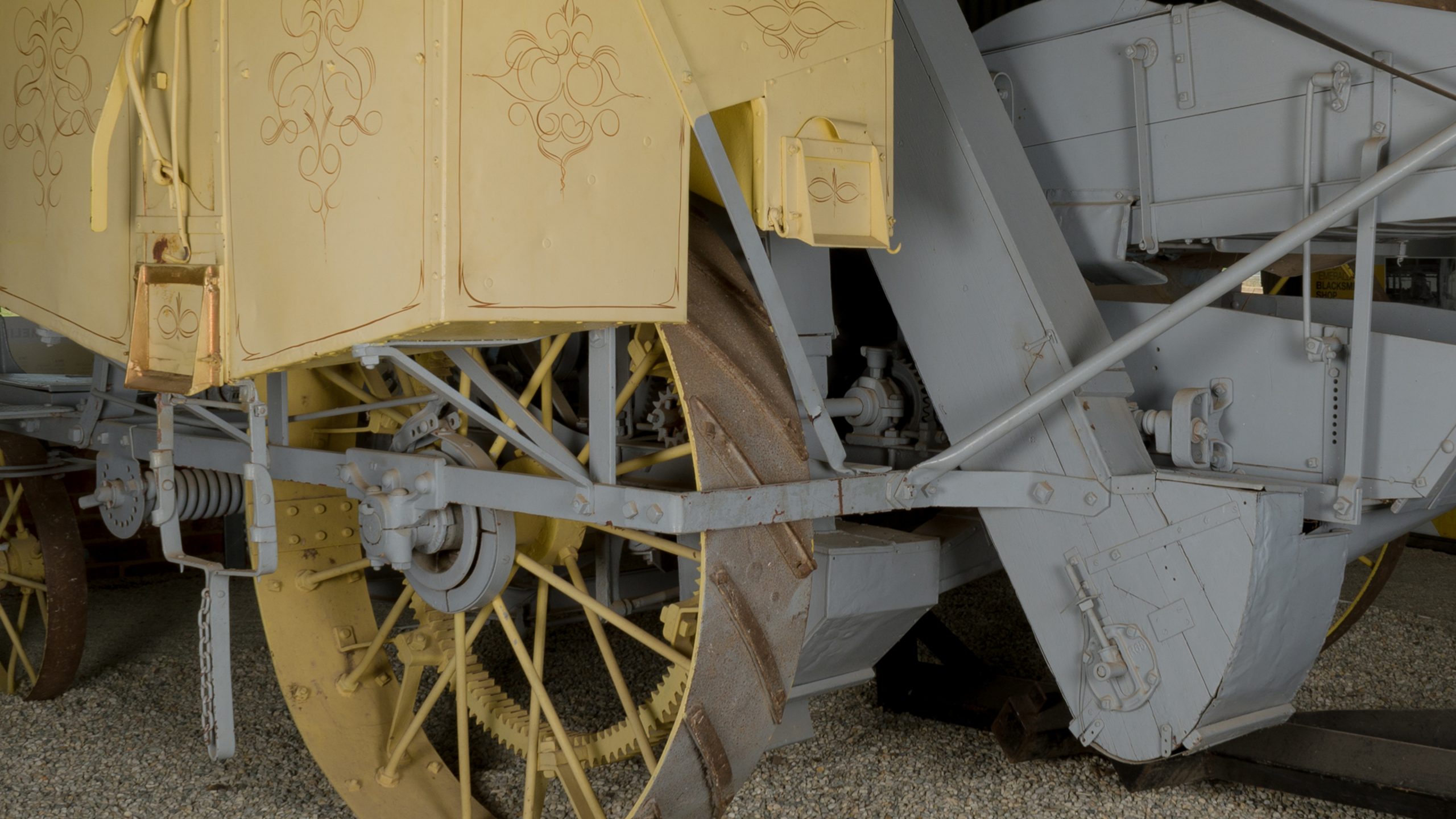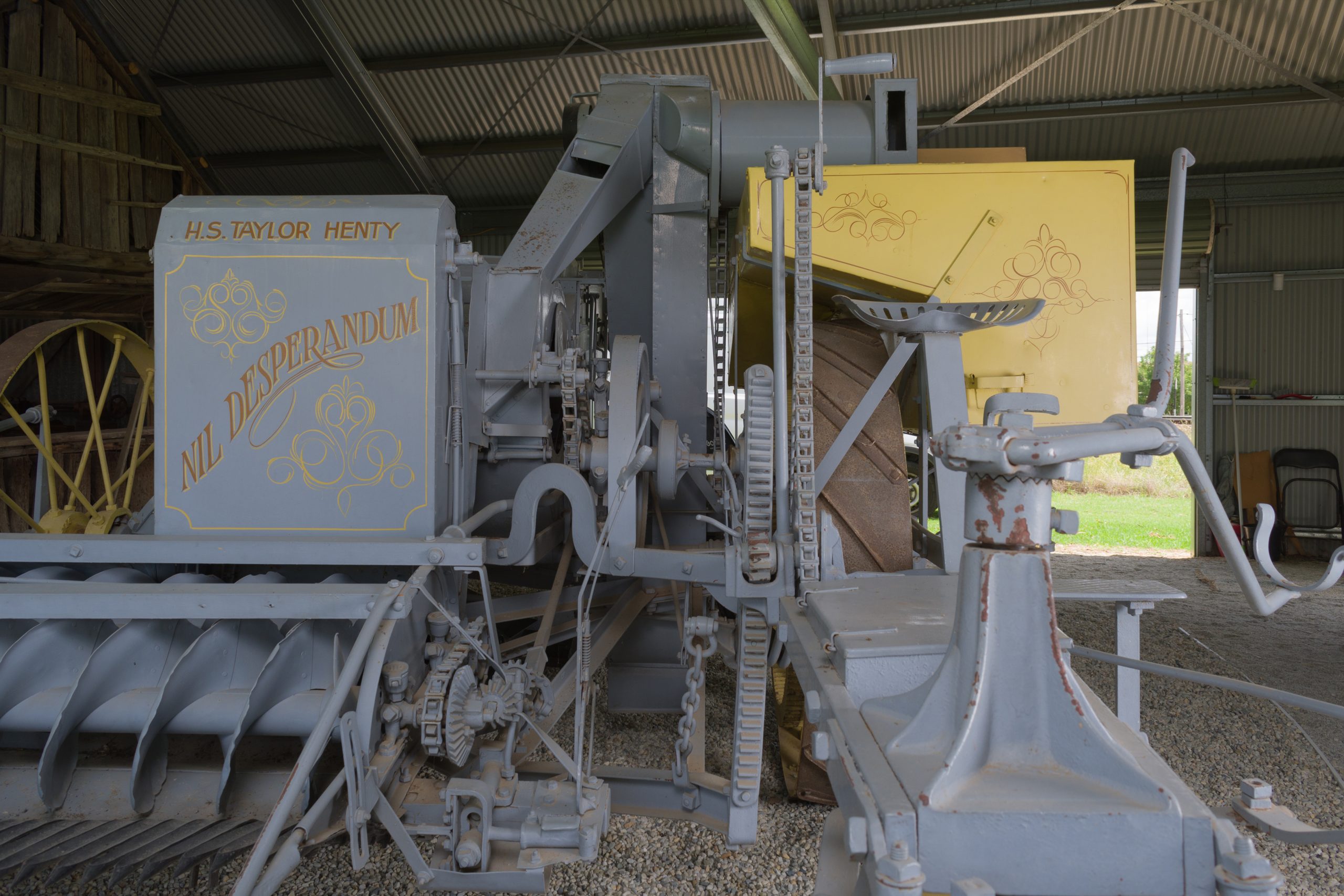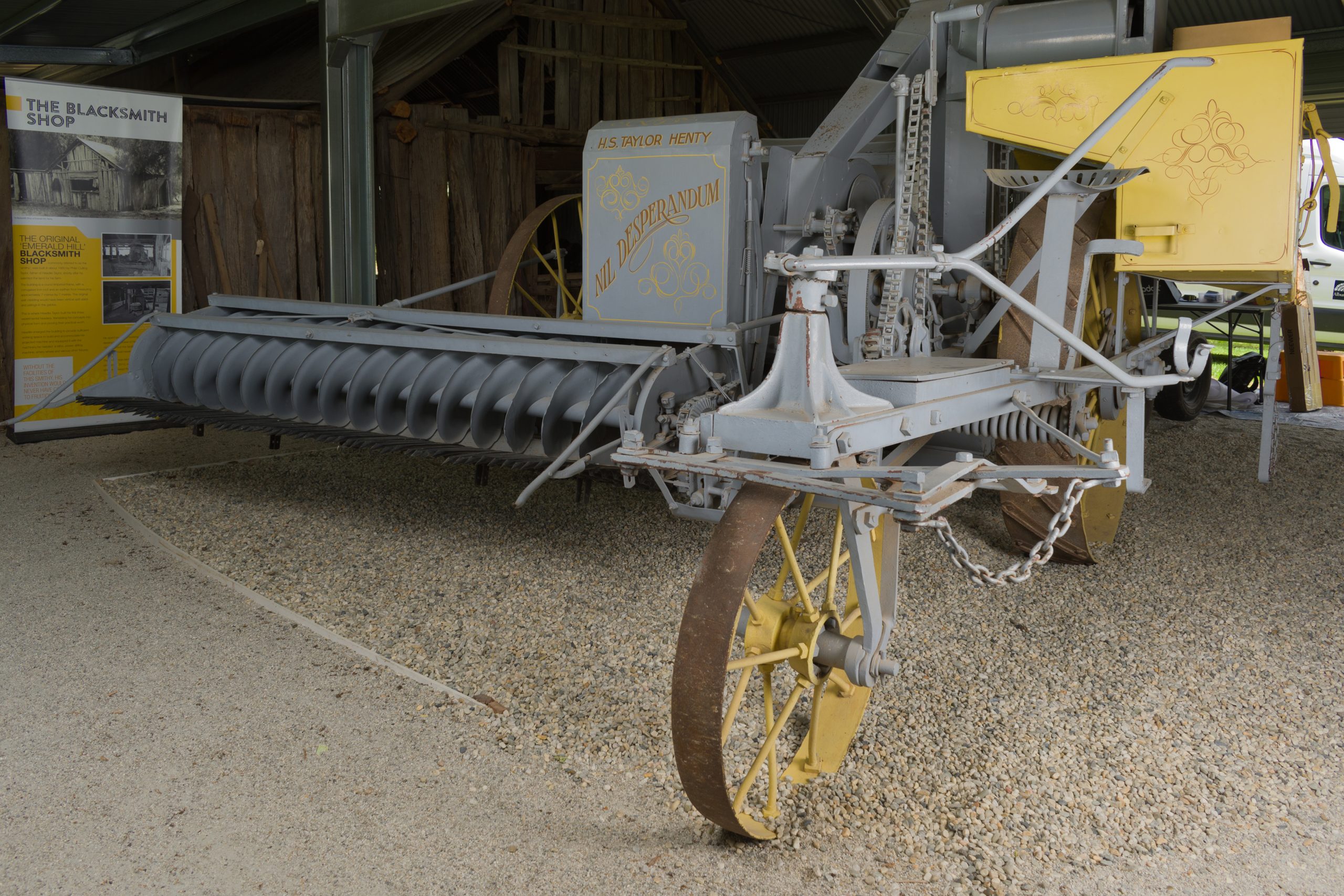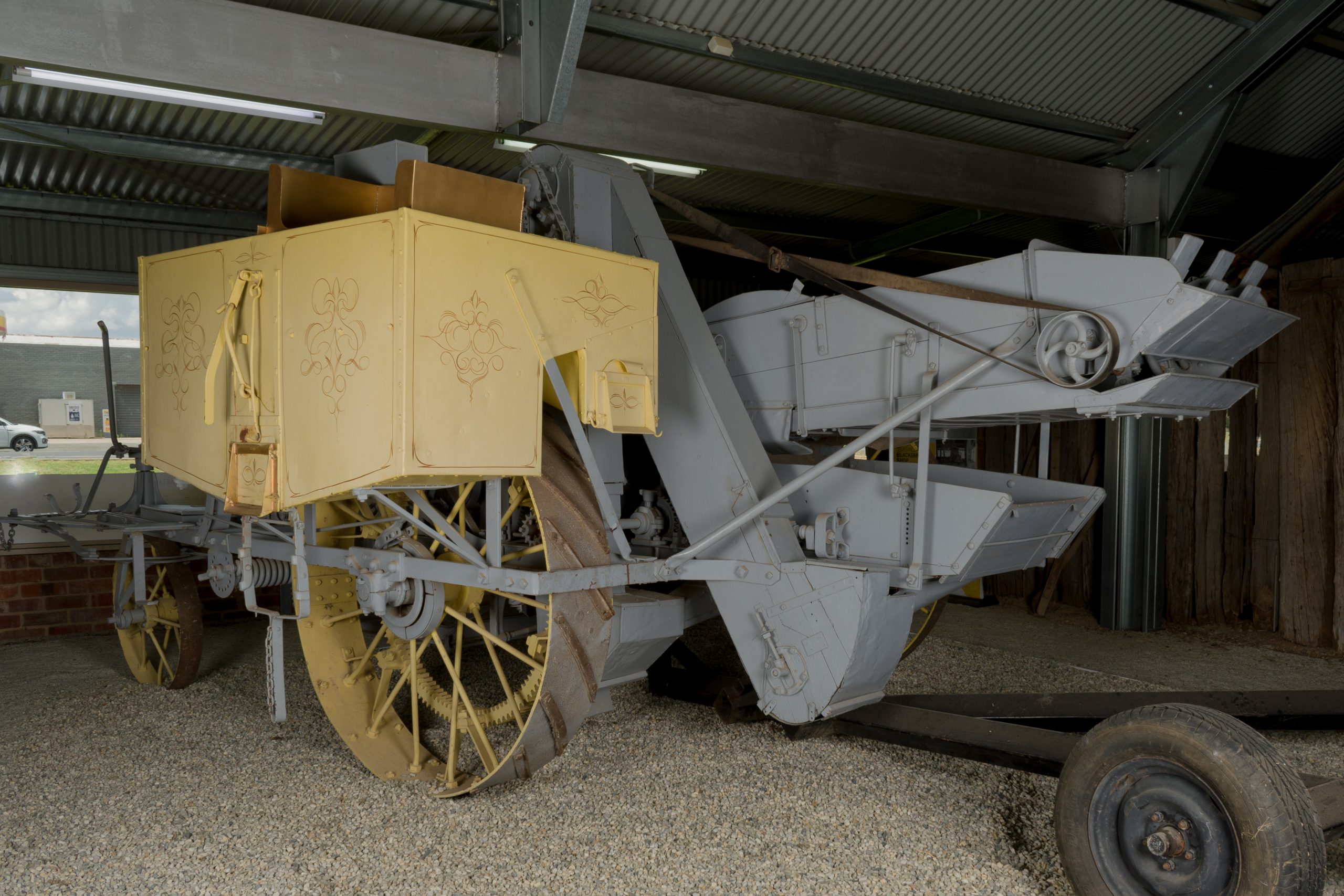Dream Machine
Remembering Headlie Taylor’s Agricultural Innovation
Headlie Taylor (1883-1957) was a great designer and innovator who, by 1915, had created the machine of his dreams. He just needed a manufacturer and finance to fully realise his ambitions.
In January 1916, Australia’s biggest agricultural industrialist Hugh Victor McKay couldn’t make Headlie’s initial demonstration on the Taylor farm, so a follow up visit was arranged for him a couple of days after at a neighbouring property.
Although impressed by Headlie’s invention McKay had one critical question. What advantages did Headlie Taylor’s Header Harvester have over existing stripper harvesters?
Headlie outlined that his machine could harvest an entire storm flattened wheat crop of tangled grain stalks. Impressed, McKay negotiated for the rights and by the first week of April, Headlie began supervising the realisation of his designs at H.V.McKay’s Sunshine factory in Melbourne.
Sadly, when the McKay company was absorbed by Massey Ferguson in the 1950s, Headlie Taylor’s prototypes displayed in the factory showroom were all dumped in a local quarry.
The machine pictured here is a reconstruction completed in 1969 by Henty locals to celebrate Headlie Taylor’s achievements. It is very close to the machine Headlie demonstrated to Hugh Victor McKay in 1916.
Built on an original chassis with parts sourced from around the countryside, each component has no serial number. This indicates they all came from the original handful of machines built by Taylor at his Emerald Hill farm workshop between 1913 and 1915.
It is hard to see the changes Headlie Taylor made. The most obvious is the large auger that moved the harvested grain to the central thresher. Other adjustments like repositioning the cutting blades closer to the comb to reduce the amount of stalk collected were made. Along with the ability to adjust the height of the comb while also keeping it level. These changes can still be recognised on modern harvesters today.
Headlie’s innovations prove that great inventions become an essential part of the way things are done.







